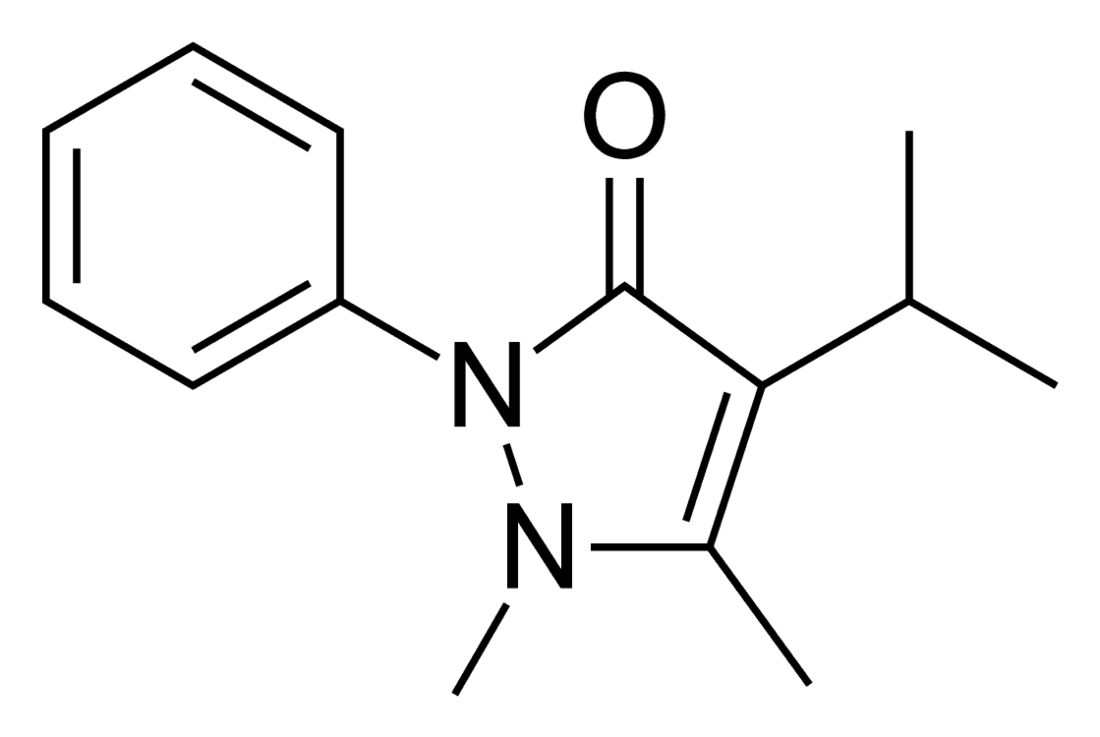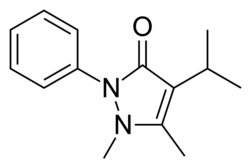Top Qs
Timeline
Chat
Perspective
Propyphenazone
Chemical compound From Wikipedia, the free encyclopedia
Remove ads
Propyphenazone (known as isopropylantipyrine in Japan)[1] is a derivative of phenazone[2] with similar analgesic and antipyretic effects. Originally patented in 1931,[3] propyphenazone is marketed as a combination formulation with paracetamol and caffeine for treatment of primary headache disorder.[4]

Remove ads
Serious adverse events
Case reports have described acute inferior-wall myocardial infarctions characterized by low atrial rhythms[vague] (Kounis syndrome) secondary to propyphenazone use.[5]
Excerpt from WHO comments
Propyphenazone, a pyrazolone derivative with anti-inflammatory, analgesic and antipyretic activity, was introduced in 1951 for the treatment of rheumatic disorders. As it is structurally related to aminophenazone it has been associated with severe blood dyscrasias. However, it cannot be transformed into potentially carcinogenic nitrosamines and has therefore been widely used as a replacement drug for aminophenazone. In certain countries, products containing propyphenazone have now been restricted in their indications, whereas in others they are still available, sometimes as over-the-counter preparations.[6]
Remove ads
Banned
Propyphenazone is banned in some countries including Sri Lanka,[7] Malaysia,[7] and Thailand.[7]
Synthesis
Ethyl 2-isopropylacetoacetate (1) and phenylhydrazine (2) are combined to form the pyrazolone ring in the intermediate (3), which is alkylated with methyl iodide to yield propyphenazone.[8][9]
See also
References
Wikiwand - on
Seamless Wikipedia browsing. On steroids.
Remove ads


